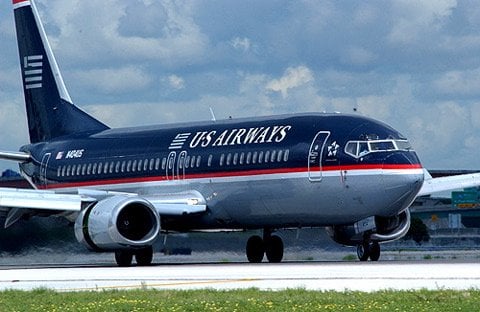(MAR-A-LAGO) The Federal Aviation Administration has imposed a year-round, 24/7 flight restriction around Mar-a-Lago in Palm Beach, effective October 20, 2025, that applies whether President Trump is present or not. The order establishes a one nautical mile no-fly zone from the surface up to 2,000 feet and is set to remain in place until at least October 20, 2026. It is a sharp break from previous practice, when flight limits were tied strictly to the former president’s visits.
The FAA says the change is for “special security reasons.” According to public safety officials briefed on the shift, the continuous rule follows heightened concern in the area, including a recent FBI review of a suspicious structure near a presidential flight path. In addition to the new one-mile rule, the familiar layered restrictions will still appear when President Trump is in residence: a 10-nautical mile inner ring where most flights are barred and a 30-nautical mile outer ring with controlled access.

What the order establishes
- Baseline restriction: a one-nautical-mile cylindrical no-fly zone, from the surface up to 2,000 feet, active 24/7.
- Duration: effective October 20, 2025 through at least October 20, 2026.
- Layered restrictions: the 10-nautical-mile inner ring and 30-nautical-mile outer ring continue to be applied when President Trump is in residence.
The FAA’s order states that no aircraft—including planes, helicopters, blimps, and balloons—may operate within the one-mile cylinder, from the ground up to 2,000 feet, at any time.
Operational impacts on airports and flights
Local officials say Palm Beach International Airport (PBI) must reroute traffic to avoid the cylinder, pushing more departures and arrivals north and west and away from the shoreline. That rerouting:
- Lengthens some flight tracks.
- Raises engine power on certain takeoffs, increasing noise for neighborhoods that previously saw less overhead activity.
- Reduces flexibility for air traffic controllers during peak periods or storm deviations.
Residents in neighborhoods such as Flamingo Park and Grandview Heights have already reported more frequent overflights and louder climb-outs. Airport staff and city leaders expect complaints to rise as crews adapt to the pattern shift.
To document disturbances, the county’s Noise Abatement Office urges residents to call 561-683-7242 or use the department’s online portal. Documenting complaints helps the airport adjust procedures where possible within safety rules.
Who is affected — community, workers, travelers
While not an immigration policy, the operational change may ripple through communities that rely on travel and include many immigrant workers:
- International students at flight schools may need updated training maps, affecting scheduling, instructor availability, and costs.
- Airport contractors (catering, cleaning, ramp services) could see shift adjustments as flight banks move.
- Flight schools serving foreign students might face tighter scheduling if practice areas become congested.
- Private pilots, including those flying on foreign licenses recognized in the U.S., must plan routes carefully to avoid the one-mile cylinder and any additional rings.
- Families traveling for consular appointments, naturalization ceremonies, or other immigration-related events should build extra time into itineraries.
According to analysis by VisaVerge.com, even small flight restrictions can create chain reactions for travelers who rely on tight connections for immigration-related needs. If a missed connection leads to a rescheduled return, visa holders should carry copies of their status documents and be prepared to explain travel changes at inspection.
What the year-round rule does — and doesn’t — do
What it does
- Establishes a constant one-nautical-mile, surface-to-2,000-feet no-fly cylinder every day, regardless of the former president’s presence.
- Ensures the FAA can still layer on 10- and 30-mile security rings when President Trump is in residence, further limiting general aviation and aerial advertising.
What it does not do
- It does not close Palm Beach airspace entirely. Commercial flights will continue, and the airport remains open.
- It does not change immigration rules at the border. Airline delays or reroutes do not alter immigration requirements.
Practical guidance for travelers and pilots
- Check flight status often and sign up for airline alerts.
- Arrive early during the first weeks of the change as crews adapt.
- For immigration-related travel (court hearings, biometrics, naturalization), allow extra buffer time and keep proof of lawful status handy if rebooking causes an overnight.
- Pilots should:
- Check official TFR listings before every flight.
- Ensure navigation apps are up to date.
- Plan routes to avoid the one-mile cylinder and be ready for pop-up inner rings.
- For authoritative, real-time information on the restriction and layered rings, visit the FAA Temporary Flight Restrictions page: https://tfr.faa.gov
Community response and politics
Officials have offered limited public explanation beyond citing security reasons. Local leaders want clearer answers about necessity and duration, noting this is the first time the FAA has locked in a year-long, 24/7 buffer around Mar-a-Lago without tying it to the president’s presence.
- Supporters say a standing buffer reduces risk by removing guesswork and preventing last-minute threats near a high-profile location.
- Critics argue a permanent rule tied to a private club burdens residents and businesses, especially when President Trump is not in town.
Local agencies say they will monitor complaint data and operational metrics to advocate for adjustments if conditions worsen.
Key takeaways
- Effective October 20, 2025 through October 20, 2026: a 24/7 one-nautical-mile no-fly zone from the surface to 2,000 feet around Mar-a-Lago.
- Additional 10- and 30-mile rings can be imposed when President Trump is present.
- Residents should document noise complaints (call 561-683-7242) to help officials target relief.
- Travelers should plan extra time; pilots must perform strict preflight checks and consult TFR resources daily.
Airspace professionals note that although the one-mile cylinder is geographically small, its constant presence can have outsized effects on a busy coastal airport and on noise-sensitive communities. The new baseline reduces controller flexibility and limits low-level helicopter operations, including news and traffic services, making careful planning and community documentation more important than ever.
This Article in a Nutshell
The FAA announced a continuous, year-long flight restriction around Mar-a-Lago effective October 20, 2025, establishing a 24/7 one-nautical-mile no-fly cylinder from the surface up to 2,000 feet. The measure, justified for “special security reasons,” applies regardless of the former president’s presence and will remain at least through October 20, 2026. Traditional layered security rings — a 10-nautical-mile inner ring and a 30-nautical-mile outer ring — still apply when the president is in residence. Operationally, Palm Beach International Airport must reroute traffic north and west, lengthening routes, raising noise in nearby neighborhoods, and reducing controller flexibility. Residents are urged to document noise complaints to the county Noise Abatement Office. Travelers, pilots, flight schools, and airport contractors should expect schedule changes, plan extra time, and monitor TFR/NOTAM updates for real-time information.













